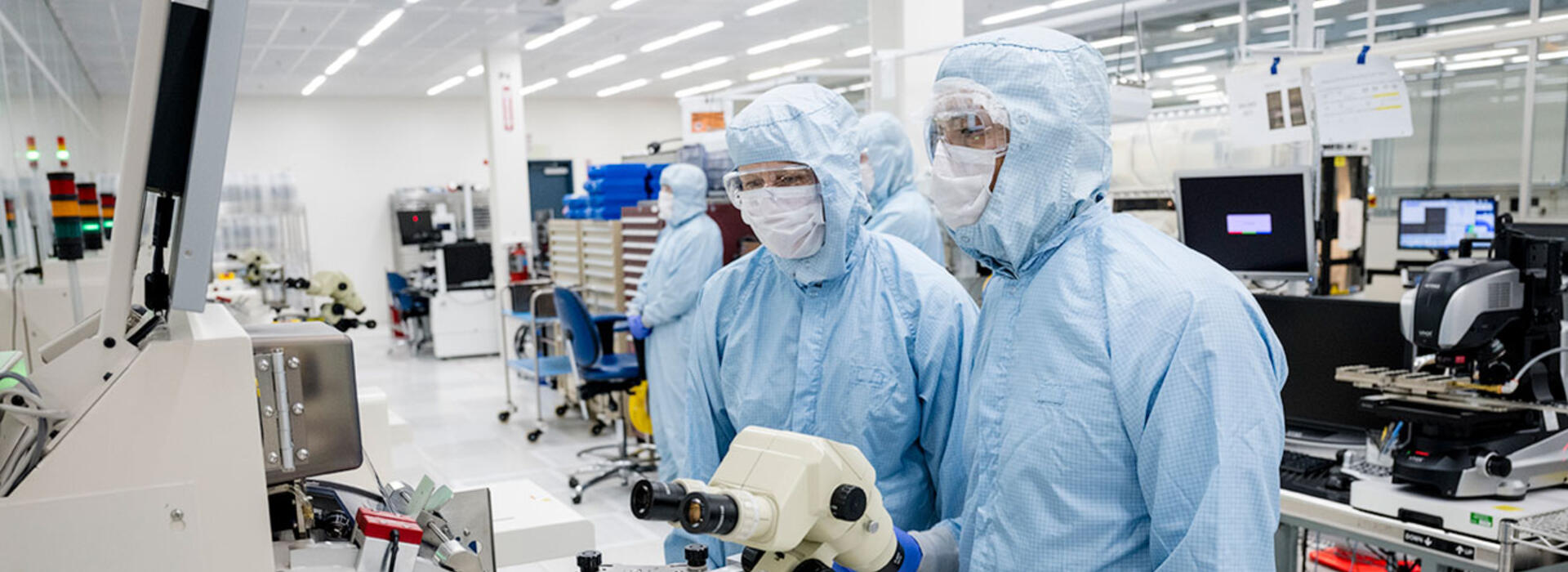Oregon State University is leading two large consortiums that aim to boost innovation and commercialization for advanced technologies to stimulate economic development in Oregon and beyond. The FAST Regional Innovation Engine and Corvallis Microfluidics Tech Hub proposals have broad support from small and large companies, startups, government agencies, universities, venture capitalists, and community groups — 65 members in CorMic and 95 members in FAST.
The process of building the consortiums has strengthened the College of Engineering’s enduring partnerships and sparked new ones, including a joint effort with Oregon Business Council’s Semiconductor Talent Consortium to develop and deliver workforce training programs.
“Regardless of the eventual funding outcomes, the establishment of CorMic and FAST represents a pivotal moment for Oregon State University, signaling its emergence as a central convener within the regional semiconductor and microfluidics ecosystems,” said Christie Dudenhoefer, the new executive director of Semiconductor Economic Development and the regional innovation officer for CorMic.
Dudenhoefer joined Oregon State in February after 33 years at HP.
"This role at Oregon State was interesting to me because it involved working at interfaces between groups like R&D teams, businesses, and manufacturers, which has been an important theme throughout my career,” she said.
Dudenhoefer brings entrepreneurial experience from 12 years as the manager of Life Science Solutions, which began as a startup within HP’s Specialty Printing and Technology Solutions group. She is also a technologist—holding 20 patents and, from the University of Michigan, a bachelor’s degree in mechanical engineering and a master’s in macromolecular science and engineering.
Frontiers of Advanced Semiconductor Technology
FAST started two years ago with an initial proposal to the National Science Foundation. In October 2024, NSF selected it to advance to the full proposal stage. Since then, the consortium has retooled, grown, and submitted the full proposal in April. Throughout the process, FAST has had support from the state.

“For the past two years, Business Oregon has been a strong advocate and thought partner with the FAST Regional Innovation Engine proposal, spearheaded by OSU,” said Sophorn Cheang, director of Business Oregon. “We are impressed with the strategy using unique collaborative efforts to spur ongoing growth and scaling innovation within the semiconductor industry, which accounts for nearly half of Oregon’s exports and is a mainstay of Oregon’s diverse workforce.”
Regional companies and organizations have also shown enthusiasm for the consortium. Last December, the Oregon Semiconductor and AI Innovation Summit organized by the Technology Association of Oregon drew 300 leaders from more than 200 organizations to learn more about FAST. The number of FAST’s partner organizations had grown to 95 by April.
“Since the proposal submission, we’ve already moved the entire program up a notch,” said Tom Weller, CEO of FAST and the Michael and Judith Gaulke Chair in Electrical Engineering and Computer Science. “Many of the plans in the proposal are already moving forward.”
One plan includes building a website, called Oregon Semi Central, to highlight semiconductor upskilling, education, internships, and jobs statewide. The initial website is projected to launch this summer. Future expansion will include resources for K-12 teachers to incorporate semiconductor information into their classes.
Oregon State has already implemented several workforce development programs, including VETS-UP, an eight-week training program for veterans who want to work in the semiconductor industry, and the CHIPS Lab, a residential program that introduces incoming students to careers in the semiconductor industry. FAST partners are also developing a new program to provide middle and high school teachers in Eastern Oregon. To create more pathways for STEM fields, FAST is developing curriculum materials that incorporate experience-based mathematics using real-world examples.
Corvallis Microfluidics Tech Hub
In May, Weller received the disappointing news that the U.S. Department of Commerce’s Economic Development Administration is not moving forward with six Tech Hub awards announced in January, including the $45 million award for CorMic. However, the EDA has invited all unfunded consortiums to reapply.

“We fully intend to participate in the EDA’s next Notice of Funding Opportunity and remain well positioned to further national security interests as a global leader in microfluidics for semiconductor manufacturing,” Weller said.
The plan includes developing three spaces on the HP campus in Corvallis for different types of microfluidics research and development: silicon microfluidics, advanced materials development using continuous flow processing, and biotechnology applications of microfluidics. The campus’s Foundry+ includes access to a silicon microfluidics prototyping fab, with equipment and processes compatible with HP’s production fabrication facilities worldwide.
“The HP facilities are an important asset for companies who are looking to scale up production of their product because the prototyping will be done on the same kind of tools and processes as a full-scale fab,” Dudenhoefer said.
CorMic leverages decades-long partnerships between Oregon research universities and regional companies, including Analog Devices, HP, Intel, Thermo Fisher Scientific, and NVIDIA. The consortium also includes regional venture and workforce development organizations that will provide wrap-around services to support business success and scale-up.
“From the beginning, my office has been supportive of CorMic, recognizing the value this economic engine will bring to our state and to the semiconductor, biotechnology, and advanced materials industries,” Governor Tina Kotek said. “The significance of this work will impact the economy and national security across the globe, from here in Oregon. My office is excited to continue to support the ongoing work of CorMic as Oregon continues on the path of global microfluidics leadership.”



